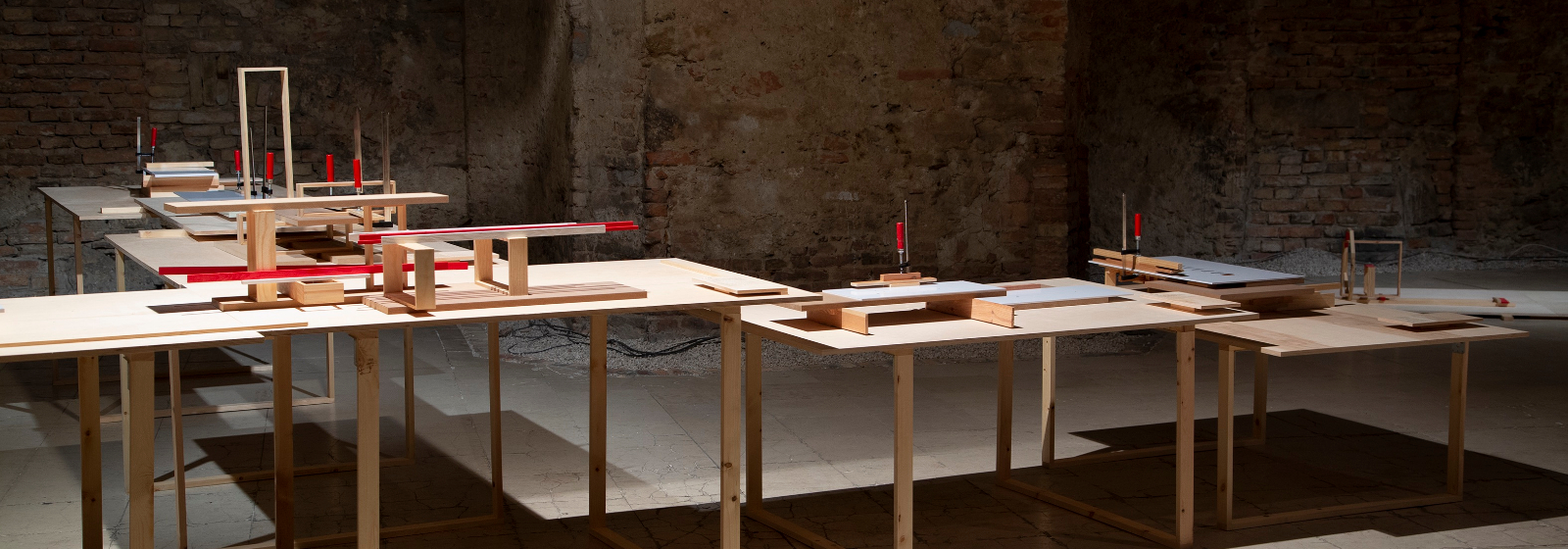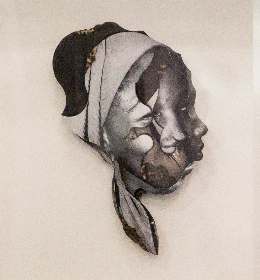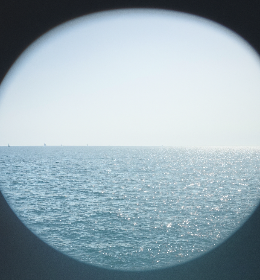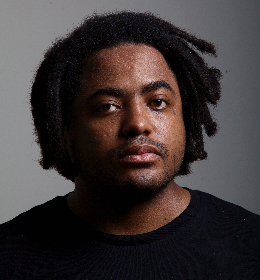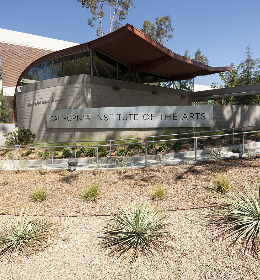In assuming the role of explorer, I launch myself from this world into the exhibition space across a perilous stream of consciousness where my own memories reside. Rappelling into the center of Asztalos’s mind’s eye, I cautiously encounter his Remembrance video series 1-5. Placards affixed to a row of storage shelves appear to receive memories in the form of video projections. Much like radio signals, these projections are both present and absent, ephemeral and permanent.
Participants in these works remember their lives while the camera rolls. They are larger than life luminous portraits of seated figures in contemplation. These videos overpower and captivate the onlooker with poses fixed and slightly turned away from us, their focus elsewhere. Here, a moment of introspection is captured as the sitters unconsciously reflect on the series of events that float in and out of their willful administration of memory, perhaps as a medicinal dose of retrospection.

Zsolt Asztalos, Memory Model 15., Installation, mixed materials, 2019-2020 | Courtesy of the Artist and Ani Molnar Gallery
As I turn further into the main nave, I see the fairy-like luminescence of lights above the memory models. They remind me of ancient libraries or perhaps the candles above the desks of the monks who would have occupied this monastery in the distant past. I am in the main ‘workshop,’ where memories are constructed, where the artist has explored, tested, experimented with different configurations of thoughts, different models of memory, discovering and recovering how it shapes itself, how scholars have explored its extensions and depths.
There are clamps, boards, measuring elements used often in a carpentry shop, which are tenuously holding objects together, maintaining both awkward and elegant balance. These various assemblages are tightly pinched with clamps, weight, stacked objects, so as not to let things change or be removed, and yet there is an element of the impermanence of memories suggested.
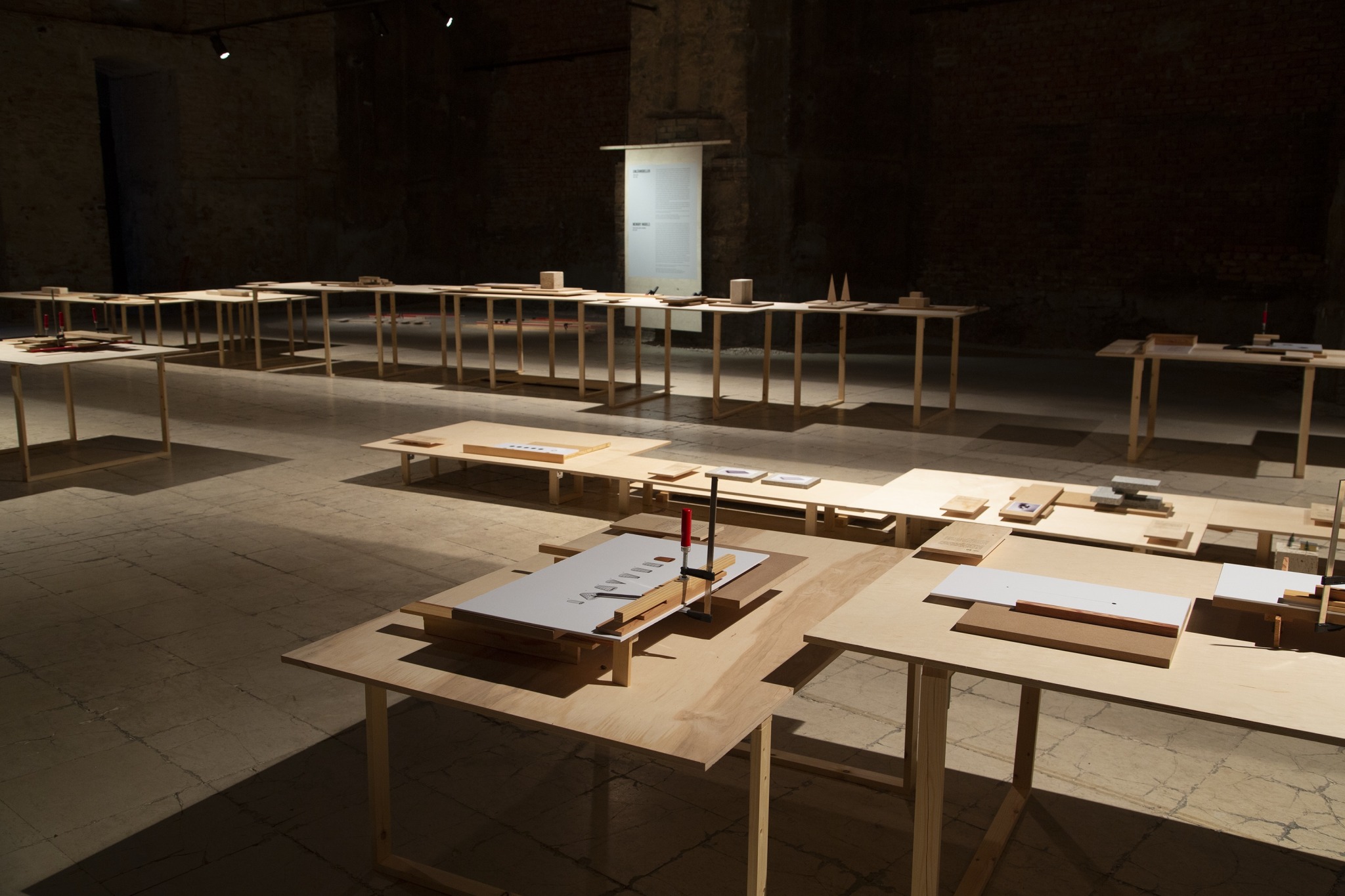
Zsolt Asztalos, Memory Model, Installation, mixed materials, 2019-2020 | Courtesy of the Artist and Ani Molnar Gallery
I could easily approach and untwist a clamp, take away a piece of wood, place another on top. In fact, I almost feel entitled to do this, as if the sense of placement dares me to do it. This conjures a precociousness, a child-like sense of limits and the pushing of boundaries to discover where the zone of safety and danger approach one another in an eternal duel. A sense of foreboding envelops me, as if there are only two roles in this game: the master or the apprentice. A narrative emerges; the master or artist has just stepped away, while I have ventured secretly into the workshop where ghosts of memories untold might still be unleashed. My presence could equally be a disturbance or a welcomed deflection, a moment to share the ideas, the new configurations, the games which memory presents; its formation solidified in the sharing of it.
The models rest on tables set about in a kind of path, with texts written by the artist from his research on memory pristinely printed on slivers of wood.
Asztalos has consulted the writings of Alan Baddeley and Daniel L. Schacter, before setting this text as a path through the exhibition much like turning the pages of a magazine with insights and perceptions, new discoveries intertwined amongst these sculptures poised to share the experience of the unraveling of the mysteries of memory construction: its paths, architectures, and aqueducts.
The most surprising elements of all in these models are the puzzle pieces he includes: prefabricated letters, objects from contemporary novelty stores, trees, and shapes, a visual lexicon of the contemporary consumer. A large letter A stands tall, while at the opposite end of a plank a smaller version of the same capital letter has fallen, an alphabetical drama ensues. I remark that his day job is working with advertising and file this presentation as I chuckle softly to myself at this humorous interpretation of the daily stress of a life filled with deadlines and typefaces.

Zsolt Asztalos, Memory Model, Installation, mixed materials, 2019-2020 | Courtesy of the Artist and Ani Molnar Gallery
Reading the texts alongside the works, I begin constructing a memory of the exhibition much like the artist describes in these small wooden plaques, creating a topography that is a construction of memory. Asztalos refers to different relations and codifications of memory according to the uniqueness of experiences, the everyday repeated events, the necessity of abstraction in the comprehension of events, both their essentials and their complexities. As an artist observing another artist, I am particularly struck by his text which references attaching meaning to a repeated event, making sense of it and its significance in the retention of memory. In memorizing artists and their works at university, I could remember their names and the dates of their works only in attaching them in my memory to the image or object they created, one would not remain in my mind without these other details attached.
I pause in looking at a work that is composed of wood pieces stacked and clamped. A drawn series of overlapping and crisscrossing lines with black dotted endpoints activates these memory triggers in my reflections; I see the stars, the constellations, his text refers to memory as fragments, insisting that no single memory exists as an entirety. He emphasizes that it is not the memory that we remember, but what triggers the memory, the association that we make. I add silently to myself- this is essentially the element that we contribute, our own codification, our own triggers and symbolic system of categorizations, whether common or individual. For me, these are the constellations, the star charts I have often seen, and this codification will be embedded together with his work now.
I ask Asztalos about his specific interest in creating these works and he remarks, “When dealing with the past, I am not interested in specific stories, but in the scheme, the method, that is, how we remember. I am interested in the system that defines personal and collective memory. I wanted to objectify these theoretical systems. What is exciting for me is how to materialize methods of thinking, pure theories in the form of an abstract sculpture model into which any real story can be substituted at any time.” His research resonates in multiple striations, my mind begins to compose using his models for future applications, he has influenced and eradicated, replaced, and replicated, with a subtlety and suggestiveness, a gentle reminder that things are not always remembered in just one way or another.
Kiscelli Múzeum, Budapest, Hungary
November 25th, 2020 – February 28th, 2021
Anne Murray




